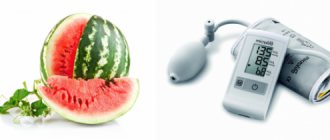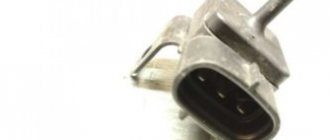International System of Units (SI)
Pressure P is the physical quantity of force F acting on a unit surface area S, directed perpendicular to this surface. those. P=F/S.
In the International System of Units (SI), pressure is measured in Pascals: Pa is the Russian designation. Pa - international. 1 Pa = 1 Newton / 1 sq. meter (1 N/m²)
For practical measurements in instrumentation and automation, 1 Pa is often too small a pressure value, and to operate with real data, multiplying prefixes are used - (kilo, Mega), multiplying values by 1 thousand. and 1 million times respectively. 1 MPa = 1000 kPa = 1,000,000 Pa Also, the scales of pressure measuring instruments can be directly calibrated in Newton / meter, or their derivatives: Kilonewton, Meganewton / m², cm², mm².
Then we get the following correspondence: 1 MPa = 1 MN/m² = 1 N/mm² = 100 N/cm² = 1000 kN/m² = 1000 kPa = 1000000 N/m² = 1000000 Pa
In Russia and Europe, the units bar (bar) and kgf/m² (kgf/m²), as well as their derivatives (mbar, kgf/cm²), are also widely used for measuring pressure. 1 bar is a non-systemic unit equal to 100,000 Pa. 1 kgf/cm² is a unit of pressure measurement in the MKGSS system, and is widely used in industrial pressure measurements. 1 kgf/cm² = 10000 kgf/m² = 0.980665 bar = 98066.5 Pa
FAQ
1 bar how many atmospheres?
To get an approximate result of how many atmospheres are in one bar, you need to divide the pressure value by a factor of 1.013. That is, 1 bar is 0.98 atmospheres
. Therefore, when converting one unit of measurement of small pressure (up to 10 bar) to another, it is generally accepted that 1 bar ≈ 1 atm. This ratio in calculations will give an error not exceeding 2%.
1 MPa is how much bar?
To find out how much bar is in one megapascal, it is enough to multiply the pressure value expressed in MPa by 10. That is, 1 MPa = 10 bar
.
1 MPa is how many KGS cm2?
To convert one MegaPascal to a pressure value expressed in kilogram-force per square centimeter, it is enough to multiply the MPa value by 10.197. Thus 1 MPa = 10.197 kgf/m²
.
Atmosphere
The atmosphere is an off-system unit of pressure measurement approximately equal to the atmospheric pressure of the Earth at the level of the World Ocean. There are two concepts of atmosphere for measuring pressure:
- Physical (atm) - equal to the pressure of a column of mercury 760 mm high at a temperature of 0° C. 1 atm = 101325 Pa
- Technical (at) - equal to the pressure produced by a force of 1 kgf per area of 1 cm². 1 at = 98066.5 Pa = 1 kgf/cm²
In Russia, only the technical atmosphere is allowed for use in measurements, and its validity is limited, according to some sources, to 2021.
Physical vacuum
Vacuum is the absence of pressure. More precisely, its almost complete absence. Absolute vacuum is an approximation, like an ideal gas in thermodynamics and a material point in mechanics.
Depending on the concentration of the substance, low, medium and high vacuum are distinguished. The best approximation to a physical vacuum is outer space, in which the concentration of molecules and pressure are minimal.
There is an almost complete absence of pressure in space
Pressure is the main thermodynamic parameter of the state of the system. The pressure of air or other gas can be determined not only using instruments, but also using equations, formulas and the laws of thermodynamics. And if you don’t have time to figure it out, the student service will help solve any problem of determining pressure.
water column
The water column meter is a non-systemic unit of pressure measurement used in a number of industries. Physically, it is equal to the pressure of a column of water 1 m high at a temperature of about 4 ° C and the standard gravity acceleration for calibration - 9.80665 m/sec². m water Art. - Russian designation. mH2O - international.
The derived units are cm water. Art. and mm water. Art. 1 m water Art. = 100 cm water. Art. = 1000 mm water. Art. Relates to other pressure units accordingly: 1 mH2O. Art. = 1000 kgf/m² = 0.0980665 bar = 9.80665 Pa = 73.55592400691 mm Hg. Art.
Arterial pressure
Another example where we encounter pressure in everyday life is when measuring blood pressure.
Blood pressure is blood pressure, i.e. the pressure that blood exerts on the walls of blood vessels, in this case arteries.
If you measure your blood pressure and it is 120 over 80 , then everything is fine. If it ’s 90 by 50 or 240 by 180 , then you definitely won’t be interested in understanding how this pressure is measured and what it even means.
Blood pressure - the pressure of blood on the walls of the arteries
However, the question arises: 120 to 80 of what exactly? Pascals, millimeters of mercury, atmospheres or some other units of measurement?
Blood pressure is measured in millimeters of mercury. It determines the excess of fluid pressure in the circulatory system above atmospheric pressure.
Blood exerts pressure on the vessels and thereby compensates for the effect of atmospheric pressure. If it were otherwise, we would simply be crushed by the huge mass of air above us.
But why are there two numbers in the blood pressure measurement?
By the way! For our readers there is now a 10% discount on any type of work
The fact is that the blood does not move evenly in the vessels, but in jerks. The first number (120) is called systolic pressure. This is the pressure on the walls of blood vessels at the moment of contraction of the heart muscle, its magnitude is the greatest. The second number (80) determines the lowest value and is called diastolic pressure.
During the measurement, the values of systolic and diastolic pressure are recorded. For example, for a healthy person, the typical blood pressure value is 120 per 80 millimeters of mercury. This means that the systolic pressure is 120 mm. rt. Art., and diastolic – 80 mm Hg. Art. The difference between systolic and diastolic pressure is called pulse pressure.
US and British units
In the USA and Britain, other units of measurement of pressure are also used.
This is because lengths are expressed in feet and inches, and weights are expressed in pounds, British tons, and American tons. Examples of some of them:
- Inch of water Symbol: inH2O = 249.08891 Pa.
- Foot water column Symbol: ftH2O = 2989.006692 Pa.
- Inch of mercury Symbol: inHg = 3386.38815789474 Pa.
- Pound per square inch Symbol: psi = 6894.757293178 Pa.
- 1000 psi Symbol: ksi = 6894757.2931783 Pa.
- Pounds per square foot Symbol: psf = 47.8802589803 Pa.
- American (short) ton per square inch Symbol: tsi = 13789514.58633672267344 Pa.
- US (short) ton per square foot Symbol: tsf = 95760.51796067168523226 Pa.
- British (long) ton per square inch Symbol: br. tsi = 15444256.3366971 Pa.
- British (long) ton per square foot Symbol: br. tsf = 107251.780115952 Pa.
How to measure water pressure in a system
The question disappears if you already have a pressure gauge at the system inlet. If not, then you will need 5 minutes of time and the following useful things:
- Pressure gauge for water.
- 1/2 inch threaded fitting.
- Hose of suitable diameter.
- Worm clamps.
- Plumbing tape.
the hose on one end on the pressure gauge, the other on the fitting. We fix it with clamps. Let's go to the bathroom. We unscrew the shower head and replace it with a fitting . We switch the water between the shower and faucet modes several times If the joints are leaking, then wrap the joint with plumbing tape . Ready. Look at the pressure gauge scale and find out the pressure in the water supply.
The hose option is universal . However, instead of a hose with clamps, you can use adapters with a 1/2- inch outlet. The required inlet adapter thread depends on the specific gauge thread ( metric , 3/8 , 1/4 ).
What are the dangers of excessive pressure?
Household plumbing fixtures, taps, mixers, shower hoses, flexible hoses, household equipment are designed for a certain operating pressure in the water supply. In our country it is 6 kgf/cm2. But even a pressure of 6 kgf/cm2 can damage household appliances, not to mention cases where this value is exceeded.
High pressure destroys weak elements and flooding occurs. When flooded with water, property and interior decoration are damaged and a short circuit is possible. Damage to hot water pipes leads to even greater damage.
With increased pressure, fistulas can form in worn pipes or leaks in threaded connections. Prolonged dripping of water damages the finishing and structures of buildings.
Water hammer, which occurs when there is a sudden change in pressure, poses a great danger. Then the pressure in the water pipes may increase for a short time. But this may be enough to lead to the rupture of worn parts of the water supply system.
To avoid such dangers, you should choose the lowest water pressure values sufficient for the normal operation of household appliances.
Water hammer in water supply pipes
Water transported through pipes has a certain inertia, so when it stops abruptly, the liquid begins to thicken as a result of the pressure exerted by the part of the water that continues to move. As a result, a strong shock wave appears, directed in the direction opposite to the water flow.
For different materials, the speed of propagation of the shock wave will differ, but this value is always quite dangerous. For example, if the pump stops supplying water to the reservoir located above it, the water will rush down and thereby create a zone of high pressure.
This zone will sooner or later reach the reservoir, but it will be reflected towards the pump, which, due to water hammer, may begin to work in the opposite direction. Even if you install a check valve, the problem will still arise - the compacted water will still hit one of the weak points of the system.
To prevent this phenomenon from occurring, it is necessary to use a check valve, the response time of which depends on the time of movement of water to and from the tank. The result is a formula of the form T = 2L/V, in which L is the distance between the pump and the reservoir, and V is the speed of the shock wave.
Using this formula and known values of the shock wave propagation speed, it is possible to neutralize the impact of water hammer on the water supply system. To reduce the response speed of check valves, additional damper valves are used, which ensure system protection.
Conclusion
Correct pressure in water supply pipes is one of the most important parameters of this system, which directly affects its efficiency and durability. It is necessary to calculate the pressure in water supply pipes in an apartment and a private house in order to reduce the likelihood of damage to the system and subsequent repairs.
How to determine it yourself?
Some household appliances, such as heating boilers, are already equipped with built-in pressure gauges. But you can buy and install such a device yourself.
It is installed where the water pipe enters the house and a water meter is installed. The pressure gauge measures the actual pressure, and the user himself compares these values with those established by building regulations.
The pressure gauge readings should be checked regularly. Moreover, their sharp decrease or increase may indicate that there are some problems in the network.
Who is to blame and what to do?
Summer residents can solve the problem of low pressure in the water supply quite simply : using various pumping stations or using an autonomous water supply.
Residents of multi-storey buildings will have to work hard. To do this, it is necessary to draw up a collective letter to the management organization demanding the provision of services in the proper form in accordance with the contract, and a request to recalculate payment for poor-quality services.
To draw up papers, you need to officially record the water pressure on this line.
Why is the pressure in the water supply weak?
Low water pressure in the water supply causes inconvenience when using many household appliances and prevents you from performing water procedures using a shower.
Low pressure, or weak water pressure, in popular parlance, can occur in the plumbing system in the following cases:
- Increased water intake on the line . This is observed to a greater extent in the summer and autumn, when it is time for gardening and stockpiling supplies for the winter, since some city dwellers, especially in the provinces, can have plots of land built directly in the courtyards of apartment buildings.
- Pump malfunction . At the distribution station, the pump may fail, as a result, the rate of water supply will decrease significantly.
- Lack of electricity at the pumping station . Surely residents of apartment buildings have noticed that when there is a power outage, the water supply also stops.
- Clogged water pipes . It is possible that scale and other debris have entered the system and clogged the internal section.
- Water leak . Due to a pipeline break, the pressure in the system drops sharply and is not restored until the accident is eliminated.
- Several problems at the same time . Misfortune never comes alone. Reasons can intersect at the most inopportune moment.
HEATING MOSCOW!!! HIGH QUALITY OF WORK
DESIGN PRESTIGE LLC was founded in 1999. The company's employees have Moscow registration and Slavic origin, payment is made in any convenient way, and if necessary, work is provided on credit.
Construction and installation company DESIGN PRESTIGE
Russia, Moscow, Stroitelny proezd, 7Ak4
Telephone: +7
We work daily from 10:00 to 22:00
The company's office is located near the districts: Mitino, Tushino, Strogino, Shchukino.
Nearest metro stations: Tushinskaya, Skhodnenskaya, Planernaya, Volokolamskaya, Mitino.
Nearby are the following highways: Volokolamskoe Highway, Pyatnitskoe Highway, Leningradskoe Highway.
Pressure drop
When water flows through a pipe, the pressure at the outlet will be less than at the inlet.
The fall is determined by several factors:
- Pipe diameter.
- Its length.
- The roughness of her walls.
Plastic water pipes have much smoother walls than any metal ones.
- The speed of the flow in it.
The formula used for calculation is H = iL(1+K).
In it:
- H – pressure drop in meters. To convert it to atmospheres, it is enough to divide the resulting value by 10.
- i is the hydraulic slope, determined by the diameter, material of the pipe and the flow rate in it.
- L is the length of the pipe in meters.
- K – coefficient, for domestic and drinking water supply systems, taken equal to 0.3.
Where can I get the hydraulic slope value? In the so-called Shevelev tables. Here is a fragment of one of them, relevant for a new steel pipe of size DN15.
| Water consumption, l/s | Flow speed, m/s | 1000i |
| 0,17 | 1,00 | 266,2 |
| 0,18 | 1,06 | 296,1 |
| 0,19 | 1,12 | 327,6 |
| 0,20 | 1,18 | 360,5 |
| 0,25 | 1,47 | 560,4 |
| 0,30 | 1,77 | 807,0 |
| 0,35 | 2,06 | 1098 |
The value 1000i is the hydraulic slope for a pipe length of 1 km. To calculate the value of i for a linear meter, it is enough to divide it by 1000.
So, for a DN15 steel pipe 25 meters long with a water flow through it of 0.2 l/s, the pressure drop will be (360.5/1000)*25*(1+0.3)=11.7 meters, which corresponds to the difference pressure of 1.17 kgf/cm2.
The hydraulic slope values given are valid for new pipes. Over time, lime and rust will increase their hydraulic resistance and reduce clearance.
Arrangement of drip irrigation
Pascal's law has long been successfully applied in all arid regions of the world. But it was used most effectively in Israel. In the fifties of the last century, for the first time they began to use a method for land reclamation, which was later called drip. And they came up with it to save already precious moisture.
Moisture to the beds, as before, followed by gravity, but now it was dosed and directly under the roots of the plant. To do this, each root crop was equipped with its own personal “watering can,” and a valve with a timer was installed on the water container. And at certain intervals the seedling receives a clearly calculated portion of nutrient fluid.
Drip irrigation in the garden Source prom.st








